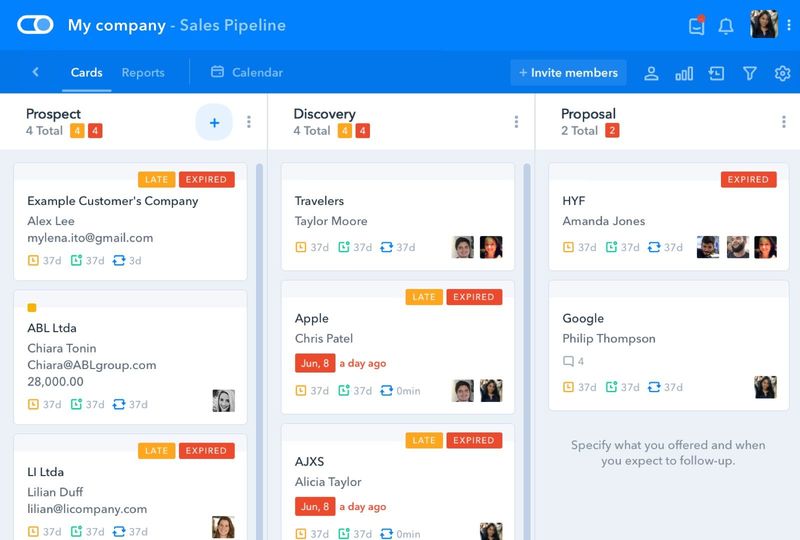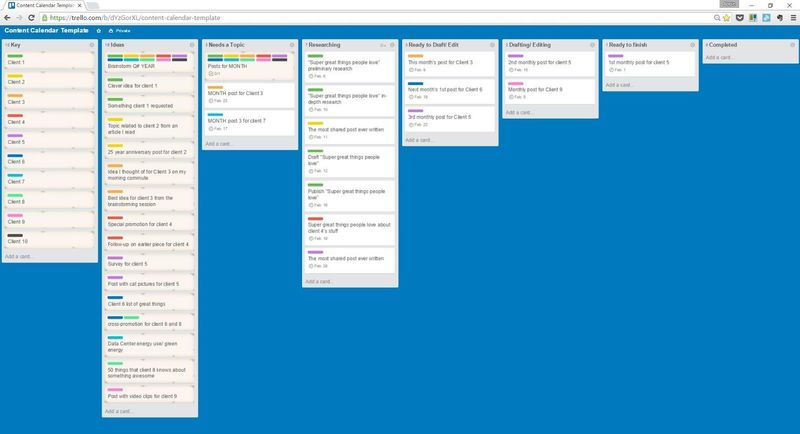Remote working sounds like fun… until you have to run a team of people. Work doesn’t happen in isolation, and it’s the business that collaborates which will succeed. But how can you do that when nobody’s at the office?
Enter collaboration and project management services. Powered by the cloud, these are easy to access through a browser and offer mobile apps, and they function across distances and even time zones. They all also offer subscription models, many with free versions, so you don’t need to spend the farm to try their software.
But there are many, many competing collaboration services. We rounded up some of the best – read on if you want the best choice for your team.
Airtable
This article isn’t out to choose a winner. All the services listed here are very good at what they do. But it’s so easy to fall in love with Airtable. This collaboration system took a page from an old friend (or possibly foe) – the spreadsheet – and created a project management system that is very easy to understand and use.

If you’ve ever tried to create a collaboration system with a shared spreadsheet, you’ll know it has severe limitations. It’s not kind on the eyes, you can’t put in much else than numbers and text, and it’s a real drag sorting that info. Airtable takes the approach of a spreadsheet but then adds a lot to effectively manage projects and tasks, track progress and make sure everyone knows what they should do.
Airtable’s free tier has limits but offers enough to get started with basic project management and collaboration.
Microsoft Teams
For serious teams, there is, well, Microsoft Teams. This service offers an extensive collection of tools, from video conferencing and instant messaging to file sharing and activity management.
Usually, Teams would have been an expensive enterprise tool. But it’s available as part of Office365, which costs very little per user. It has a robust web client, as well as desktop and mobile apps. Since Teams is part of the larger O365 world, that means that it works alongside the service’s email, calendars and online storage.
Pricing wise, Teams is both affordable, and very competitive for two reasons: you get access to the Office365 service, and prices are in rands. Unfortunately, there is no free tier except for qualifying educational institutions.
Pipefy
In the world of business, there are two critical factors for success: processes and workflows. Processes are how you accomplish a specific task (create an invoice). A workflow is when you use processes to get to an outcome (create an invoice for customer A). As you might imagine, these two factors are critical when people need to know what they should be doing and how to do it. This is where Pipefy comes in.

In essence, Pipefy is an easy way to create processes and workflows, and assign tasks related to those to employees. It’s quite intuitive, has a good drag-and-drop interface, and offers many complementary tools that make collaboration and monitoring much simpler. Pipefy prides itself on being much less complicated than other process management systems. But if you don’t need explicit processes for your collaboration, it might be overkill.
Pipefy has a decent free tier, and its paid tiers are about the same as competing products.
Slack
Slack is the king of collaboration systems. That doesn’t mean it’s the best here, but it can hold its own against just about anything you want to compare to it. Slack’s beauty is how heavily it focuses on team communication, something that sets it apart from most alternatives.
All good collaboration systems have team communication features. But Slack is built around this context: it’s foremost about getting the right people to talk to each other and stay in the loop. A user can belong to multiple groups. They can manage their interactions as if they are using a chat client such as Whatsapp – except there are also great content sharing and project workflow tools. Messages can be searched, and they can be directed at specific users. Slack also has a great special feature: you can activate Do Not Disturb, which parks messages and helps you separate work from your personal life.
Slack’s free tier has enough features to get you started, and the first paid tier is cheap.
Trello
Most project management tools have too many, well, tools. It can be confusing to do something basic – and project management works best when it’s basic. Trello might seem stripped-down when compared to some other choices here. But if you feel overwhelmed by the features of other services, Trello could be a good fit for you.

Trello is very visual. It’s inspired by a system called kanban, which started life as post-its on the boards of Toyota factories. The idea is that tasks move between different columns depending on how far along they are. Trello offers this, but instead of sticky notes, you drag-and-drop colourful boxes between pillars you define. You can see at a glance what you have done and need to do. It’s very intuitive and visual and works well with smaller teams.
Trello’s free tier is limited but still very decent.
Monday
Many point to Monday as the best collaboration platform available. That’s a subjective view – how well a service works for you depends on the size of your teams, the complexity of your tasks, and your budget. But Monday is certainly a big contender when you want to manage more complex projects with larger teams.
This is evident in Monday’s pricing structure, where the basic package supports 5 people. What you get is a very feature-rich service comparable to the likes of Microsoft Teams. Monday takes a very project-centric view and has versatile task management. You can assign tasks to individuals and prioritise tasks. Monday’s communication and file-sharing tools are fantastic for collaboration.
It can become expensive with larger teams, but at the lower tiers, Monday costs about as much per user as the other services here. But you have to pay for a minimum of five users.
Vodacom Business
By connecting people, places and things, Vodacom Business helps organisations succeed in a digital world. With our expertise in connectivity, our leading IoT platform and our global scale, we can deliver the results you need to progress and thrive. Find out how we’re helping businesses of all sizes and sectors connect for a better future.



